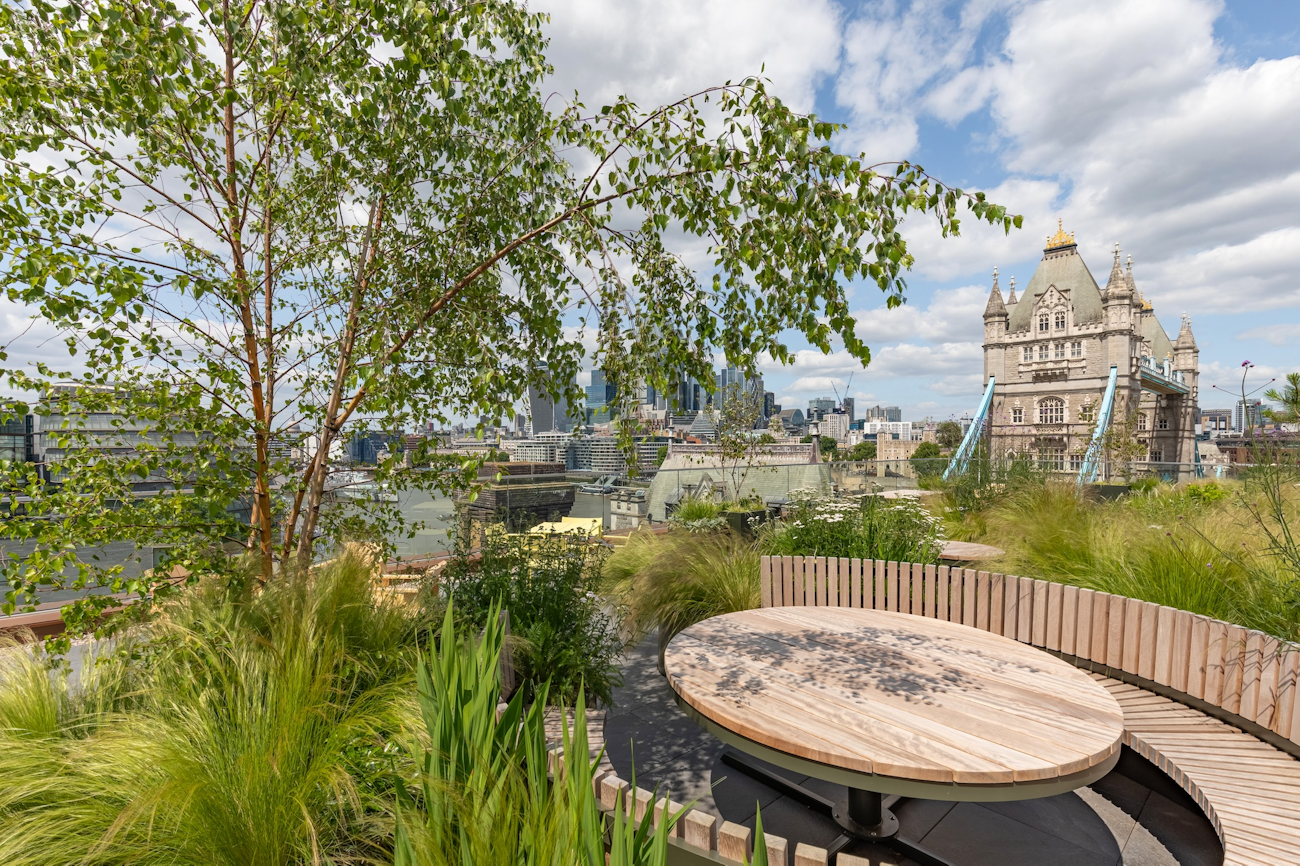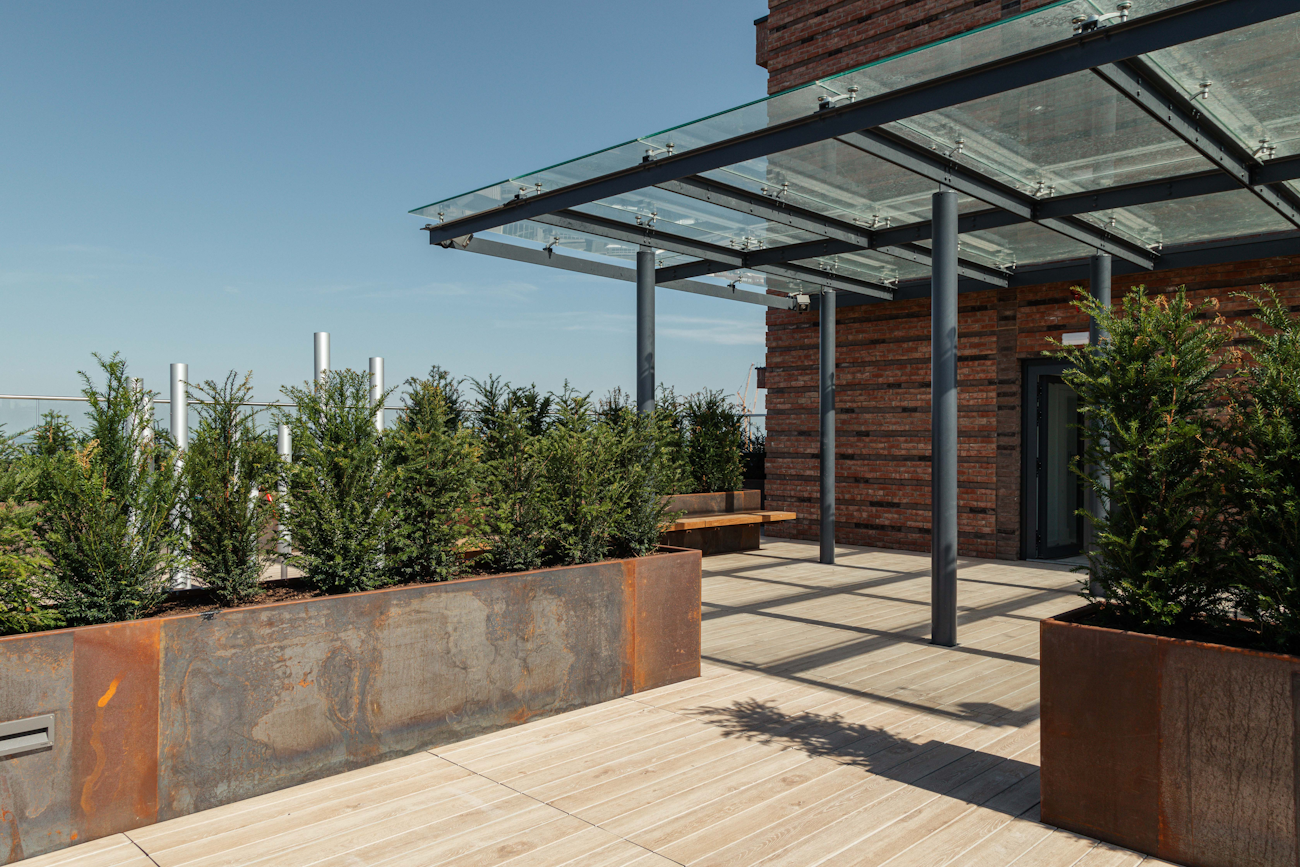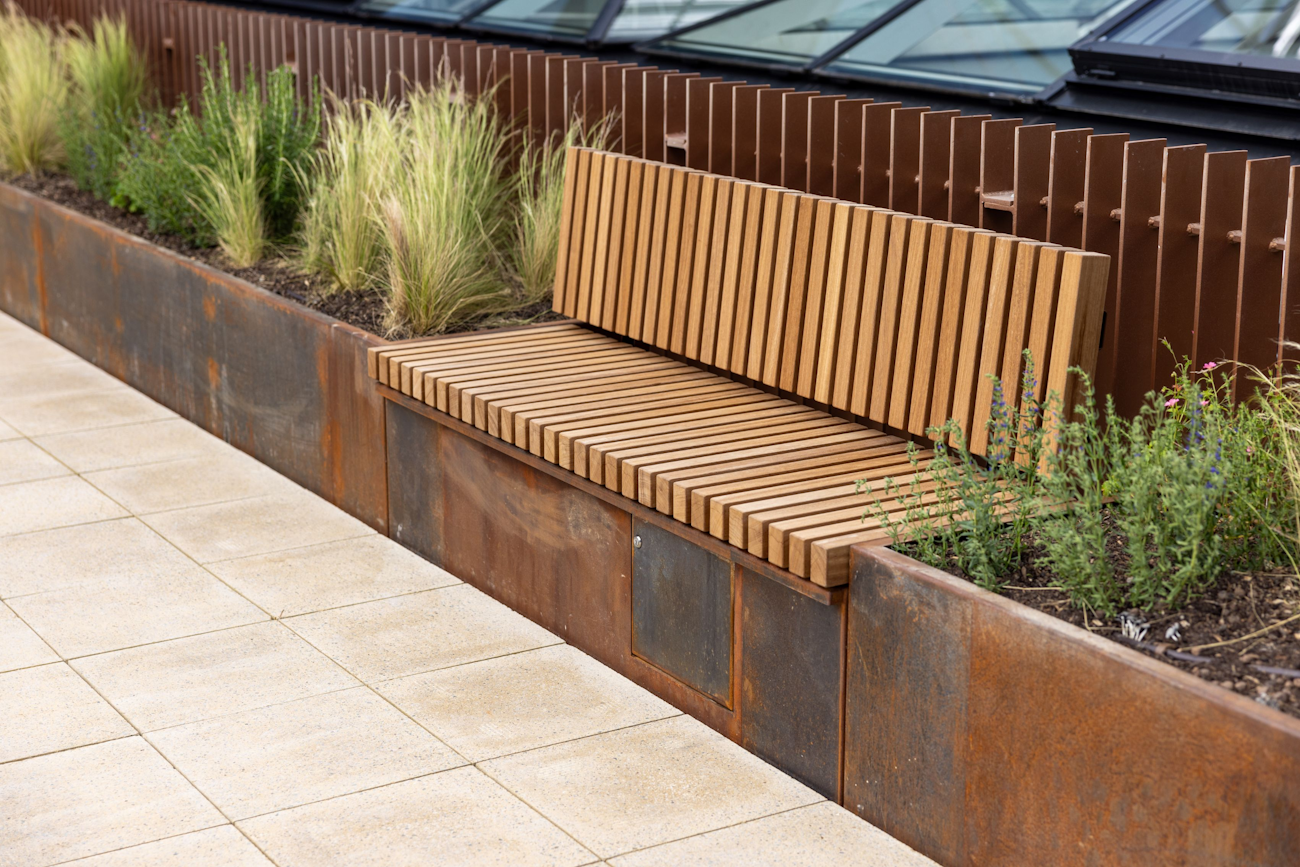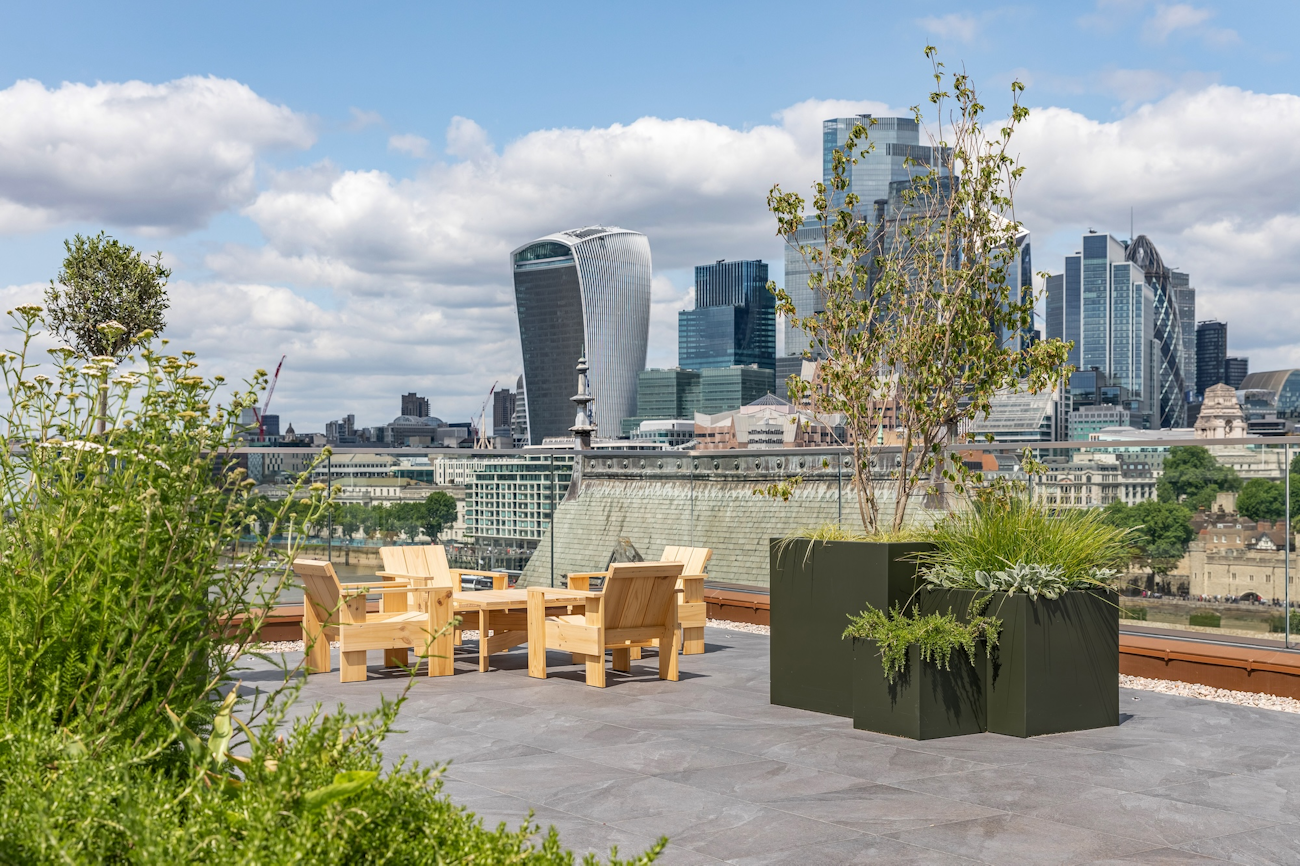Earthy tones and mixed materials: Aesthetic trends in roof terrace design for 2025

Roof terraces have become much more than just an outdoor space, they are spaces that offer a serene escape from city life. The design of these elevated sanctuaries is evolving, with a clear emphasis on natural palettes and a harmonious mix of materials.
Earthy tones are emerging as the go-to colour scheme, creating warm and inviting atmospheres that blend effortlessly with greenery and natural textures. Alongside these soothing hues, designers are creatively combining materials like porcelain and wood to add depth and character to terraces through flooring, planters and seating.
This blog explores how earthy tones and mixed materials are shaping the future of roof terrace design, turning them into stylish, tranquil retreats that reflect our growing connection to nature.
The rise of roof terrace as urban retreats
With limited ground-level garden options in many cities, roof terraces have emerged as a desirable solution. They offer a private slice of the outdoors high above the noise and bustle of the streets.
More than just functional outdoor areas, these elevated spaces are being reimagined as retreated for relaxation, socialising and wellness. Whether it’s a quiet morning coffee spot, a place for informal meetings, midday breaks or after-work networking events, roof terraces are being designed with functionality, escape and relaxation in mind.
The shift is driven by a growing desire for nature-integrated living, even in the heart of urban settings. This means more emphasis on greenery, organic materials and calming colour palettes. Coupled with smart planning and thoughtful design, roof terraces now offer a king of serenity and style that once required a getaway, right in the city.

Why earthy tones are taking over roof terrace design
Earthy tones are becoming a defining feature in roof terrace design and their popularity shows no signs of slowing. Here is why they are resonating so strongly with designers and property owners:
- Connection to nature: Shades like terracotta, sand and clay evoke natural landscapes. This helps to create a seamless link between the built environment and the outdoors.
- Calm and inviting atmosphere: These warm, muted tones bring a sense of tranquillity and comfort. They are ideal for creating relaxing rooftop retreats.
- Design versatility:Earthy colour pair effortlessly with a wide range of materials, including wood and porcelain. This allows for a layered, visually rich design that remains cohesive and elegant.
- Sustainability appeal: The use of natural colours often goes hand in hand with eco-friendly materials, reflecting a broader commitment to sustainable living.
- Timeless aesthetic: Unlike bold colour trends that can quickly date a space, earthy tones offer a timeless appeal that ages gracefully, making them a smart long-term design choice.
Mixing materials: Porcelain, wood and more in terrace styling
In roof terrace design, the art of mixing materials is key to creating dynamic, multi-dimensional spaces. Rather than sticking to a single finish or texture, designers are increasingly combining elements like porcelain, wood and greenery to bring both visual interest and functional performance to outdoor environments.
- Porcelain tiles are a popular choice for their sleek appearance and high durability. They offer a refined look of natural stone or concrete, with the added benefits of being weather-resistant, low-maintenance and slip resistance. This makes them the ideal choice for high-traffic roof terraces.
- Wood, used in planters and seating can introduce a warmth and organic texture, contrasting beautifully with the cooler, contemporary feel of porcelain. Whether through integrated seating or planters, wood softens the space and enhances the connection to nature.
As a provider of innovative terrace solutions, Raaft enables the seamless integration of mixed materials through its elevated support systems and modular decking platforms. The systems are designed to accommodate porcelain decking, planters and integrated seating. This allows designers to create a cohesive, flexible space without compromising on performance.

Integrating greenery: Brining nature into your roof space
As well as opting for earthy tones for surfaces, adding greenery through planters is one of the most effective ways to bring nature into your rooftop space. Plants not only soften the look of hard landscaping materials but can also create a sense of calm, making the terrace feel like a true urban oasis.
Here is how greenery enhances rooftop design:
- Visual warmth and softness: Lush planting balances out harder elements like porcelain tiles, making the space feel more welcoming and organic.
- Zoning and privacy: Planters can be used to subtly define areas and act as natural screens to enhance privacy without enclosing the space.
- Enhanced sustainability: Green elements help reduce the heat island effect, improve air quality and support biodiversity.
- Seamless integration with Raaft: Our flexible roof terrace systems are designed to accommodate modular planters and green features. This allows greenery to be incorporated directly into the layout without disrupting the structural integrity.
Creating seamless indoor-outdoor continuity with colour palettes
As roof terraces becoming extensions of the indoors, rather than separate zones, designers are using colour palettes and material choices to create a cohesive visual flow.
Earthy tones play a central role in this. By mirroring the natural hues found in interior furnishings, such as warm beiges, soft greys and clay, terraces can feel like a natural continuation of the indoor space rather than an abrupt shift.
This subtle alignment makes both areas feel larger, calmer and more connected.
Roof terrace system from Raaft®
Transform your outdoor spaces with the precision and flexibility of the Raaft® Terrace System. Engineered for speed, strength, and seamless design, it's the smart choice for modern terraces.

How earthy tones and mixed materials define 2025 roof terrace trends
In 2025, roof terraces are evolving into thoughtful, nature-inspired spaces that prioritise wellbeing and style. The use of earthy tones and mixed materials is at the heart of this transformation, bringing warmth, depth and a sense of calm to elevated outdoor spaces.
With smart roof terrace systems like Raaft enabling seamless design integration, creating tranquil, modern rooftops has never been more achievable.
Roof terrace systems from Raaft
At Raaft, we create high-performance roof terrace systems that support design-led outdoor spaces. Our solutions are engineered to accommodate materials such as porcelain and wood integrated seating and planters, making it easy to achieve the layered, natural aesthetic that defines 2025 roof terrace trends.
Whether you are designing with earthy tones or integrating greenery, Raaft’s modular systems provide the structural reliability and flexibility needed to bring your vision to life.
Discover how Raaft can help you create roof terraces that are not only beautiful but are built to last.